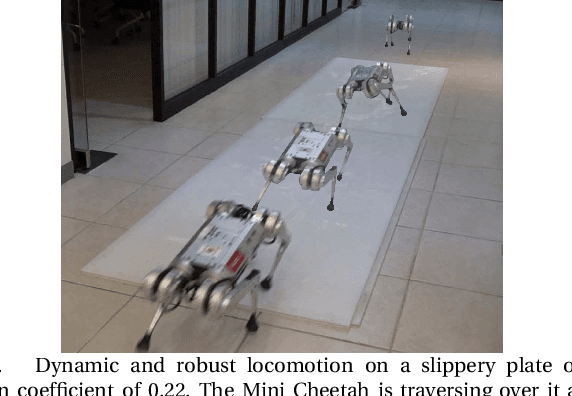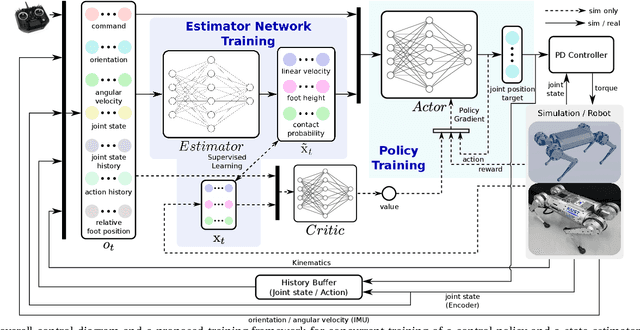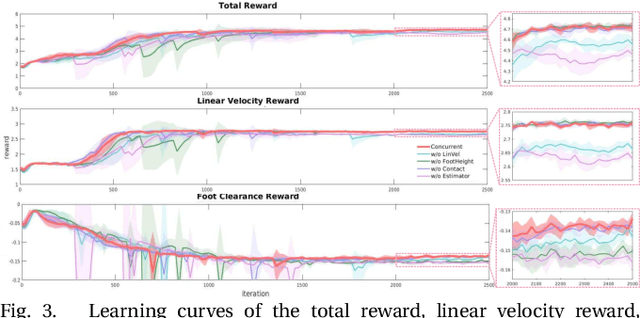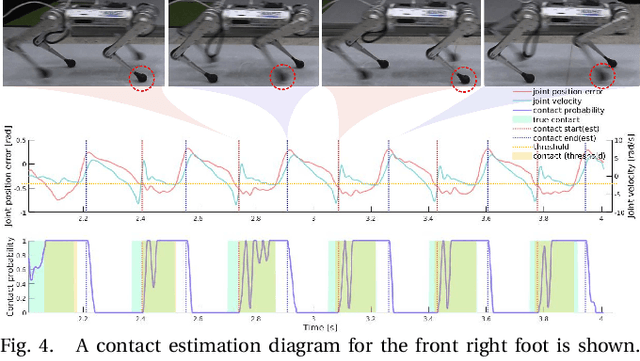Juhyeok Mun
Learning Semantic Traversability with Egocentric Video and Automated Annotation Strategy
Jun 05, 2024Abstract:For reliable autonomous robot navigation in urban settings, the robot must have the ability to identify semantically traversable terrains in the image based on the semantic understanding of the scene. This reasoning ability is based on semantic traversability, which is frequently achieved using semantic segmentation models fine-tuned on the testing domain. This fine-tuning process often involves manual data collection with the target robot and annotation by human labelers which is prohibitively expensive and unscalable. In this work, we present an effective methodology for training a semantic traversability estimator using egocentric videos and an automated annotation process. Egocentric videos are collected from a camera mounted on a pedestrian's chest. The dataset for training the semantic traversability estimator is then automatically generated by extracting semantically traversable regions in each video frame using a recent foundation model in image segmentation and its prompting technique. Extensive experiments with videos taken across several countries and cities, covering diverse urban scenarios, demonstrate the high scalability and generalizability of the proposed annotation method. Furthermore, performance analysis and real-world deployment for autonomous robot navigation showcase that the trained semantic traversability estimator is highly accurate, able to handle diverse camera viewpoints, computationally light, and real-world applicable. The summary video is available at https://youtu.be/EUVoH-wA-lA.
Concurrent Training of a Control Policy and a State Estimator for Dynamic and Robust Legged Locomotion
Mar 02, 2022



Abstract:In this paper, we propose a locomotion training framework where a control policy and a state estimator are trained concurrently. The framework consists of a policy network which outputs the desired joint positions and a state estimation network which outputs estimates of the robot's states such as the base linear velocity, foot height, and contact probability. We exploit a fast simulation environment to train the networks and the trained networks are transferred to the real robot. The trained policy and state estimator are capable of traversing diverse terrains such as a hill, slippery plate, and bumpy road. We also demonstrate that the learned policy can run at up to 3.75 m/s on normal flat ground and 3.54 m/s on a slippery plate with the coefficient of friction of 0.22.
* Accepted for IEEE Robotics and Automation Letters (RA-L) and ICRA 2022
 Add to Chrome
Add to Chrome Add to Firefox
Add to Firefox Add to Edge
Add to Edge